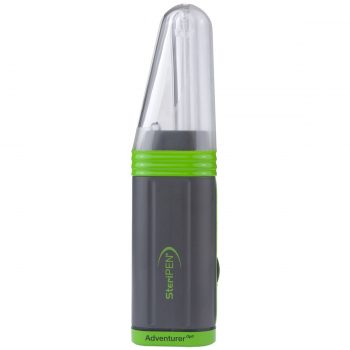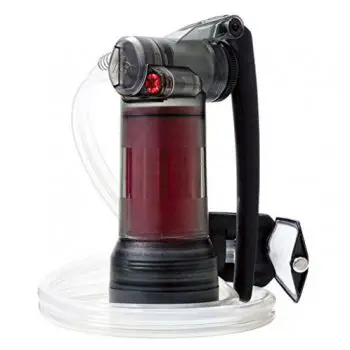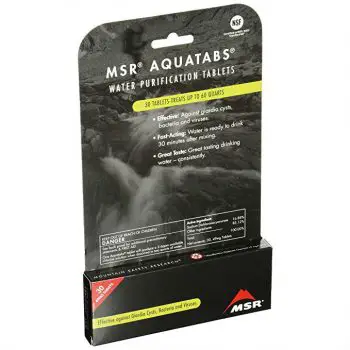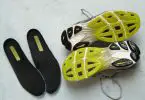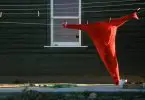As you get ready to hike and camp in the backcountry, you should start to think about how to access clean water. With the technology around water filters and purifiers changing so much, it’s easy to get overwhelmed by the options. You might be asking yourself what’s the difference between a filter and a purifier anyway? Or wondering what kinds of pathogens you should be most concerned about. Here’s where we come in.
In this article, we’ll go over the basics of portable water treatment. From types of pathogens to the materials filters are made from to quantity of water a single device can filter, we’ll put you in the best position to buy a filter that’s going to work for you and show you nine of the best backpacking water filters on the market today.
Why Treat Water?
Many people do not filter their water. They usually and mistakenly think that if the water is clear and running it’s safe to drink. The truth is that it’s impossible to tell by sight if water is contaminated.
If you’re at a higher elevation and there’s not a lot of human traffic or pack animals, you’re probably safe. If you’re on a highly trafficked trail you’re at a very high risk for drinking contaminated water.
In fact, you’re going to see signs all over the place warning you about cleaning your water because illness from dirty water is so common. With so many hikers and animals, viruses spread ridiculously quickly and easily. There are three types of pathogens that you can encounter though contaminated water, which we’ll go over next.
Pathogens
Protozoa
These organisms are single celled and can live in cold water for weeks and months at a time. They cause extreme intestinal problems and symptoms can appear from anywhere between two days and two weeks from initial ingestion.
Examples: Giardia and Cryptosporidium.
Bacteria
These are the easiest pathogens to filter out because they are larger than other pathogens.
Examples: Escherichia coli and Dysentery.
Viruses
If you’re hiking and traveling internationally, viruses are going to be a concern for you. Within the United States and Canada, viruses are much less of a threat. Viruses are not strained out by most filters because they are so small, which is why a purifier is necessary if you think you’ll be coming into contact with water contaminated by viruses.
Examples: Rotavirus and Hepatitis A.
Important Features to Consider
Now that we understand what our filters can and cannot filter out, we’re got a few more aspects of backpacking filters to consider before getting into the reviews.
Purifiers vs Filters
First off, there are two different ways to clean and treat your water. You can purify it or filter it. We’re focusing more on filters in this review, but we will give you an example of a purifier at the end.
Why’s that? Because ideally, you’re going to want to cover all of your bases and carry both a filter and a purifier. It’s the only way to eliminate all harmful pathogens from water.
A filter…
- Mechanically pushes water though a filter
- Strains out bacteria and protozoa
- Does not kill viruses
- Removes particles from the water, like silt
A purifier…
- Involves chemicals, usually in the form of drops or tablets
- Can also come in the form of a UV light
- Eliminates viruses, bacteria, and protozoa
- Can affect the taste of the water
Weight and Size
To pick the best portable water filter for your backpacking needs, weight and size are two factors that are going to be high on your priority list. There’s a wide range in size and weight in the filter world and our picks reflect that. Keep in mind as you continue reading how much space and weight you’re willing to allot for a filter.
Time Before Drinking
There’s always going to be a wait time between collecting and cleaning your water. Depending on your filter or purifier, this can also have a lot of variability.
Generally, gravity fed filters and pumps are going to work faster than a chemical treatment (seconds vs minutes). The chemicals that kill viruses will be smaller and lighter than a pump however.
Quantity of Water Needed
Consider if you’ll mostly be hiking solo or with a group. This will also be a strong factor in determining what kind of water treatment you’ll go with. For solo hikers, you can simply fill up your bottle, screw a filter onto the top, and drink on the go.
If you’re looking to carry more water, you have some fast pump options too. But for crew leaders who anticipate needing to filter water for a few people or make large meals with water, you’re going to want to consider pumps and gravity filters since these can quickly accommodate the volume of water you’ll need.
Think about the quantity of water you’ll need on the majority of your trips to help determine the best camping water filter for you. Below is a quick cheat sheet:
Filter Styles For Smaller Amounts:
- Straw
- Bottle
- Squeeze
Filter Styles for Larger Amounts:
- Pump
- Gravity
Different filter materials
It’s easy to forget with fancy pumps and hoses that the actual filter is a tangible piece of gear in between the dirty and clean water and it can be made out of a few different materials, each with their own pros and cons.
Ceramic
- An earthen material, just like what your coffee mug is made out of
- Has a long life
- Easy to scrape clean
- Can get clogged easily
- Carbon core helps remove chemicals from water and improves taste
Fiberglass
- More fragile than ceramic but works similarly
Hollow Fiber
- Made of hollow U shaped micro tubes
- Tiny pores in the core strain the pathogens out
Silica Depth
- Uses fine grained silica sand
- Different levels of finely sized grains (largest à finest)
- Catches different sized particles making it a thorough choice
The Best Water Filters Around
We’ve covered a lot of information on pathogens and water filter styles. Hopefully you’re closer to understanding what you personally need in a water filter after considering that information. Let’s get into the reviews. Below you’ll find some of the best hiking water filters organized by weight.
LifeStraw Personal Water Filter
Weight: 2 oz.
Dimensions: 8.86 x 0.98 x 8.86 inches
Features: Removes minimum 99.9999% of waterborne bacteria an 99.9% of waterborne protozoa, surpasses EPA standards for water filters, filters up to 1000 L of contaminated water without iodine, chlorine, or other chemicals, comes in a sealed bag making it perfect for storing in preparation for emergencies, it’s also compact and ultralight.
Best use: Backpacking, camping, survival, running, hunting, and traveling abroad.
Description: The LifeStraw Personal Water Filter contains no chemicals, requires no batteries, and features no moving parts that can wear out. It has a high flow rate and is only 2 oz, making it a perfect option for the lightweight backpacker.
LifeStraw also meets the EPA standards for water filtration and has been used around the world in a variety of conditions. After only 3-5 seconds of sucking, the flow of water through the filter is activated allowing the drinker to drink immediately and directly from the bottle, stream, pond, or puddle.
There’s no wait time because of pumping or chemicals reacting. After a drinking session, blow back through the straw to expel dirty water and to flush the filter membranes. It’s worth noting that this filter does not filter chemicals, salt, viruses, heavy metals, or alter the taste of the water source.
Related: Want to carry clean water with you? Consider LifeStraw Go which integrates the filter with a bottle.
Sawyer PointOne Squeeze Water Filter System
Weight: 3 oz
Dimensions: 9.5 x 3.5 x 4 inches
Features: Lightweight, portable, 0.1 absolute micron hollow fiber membrane inline water filter, removes greater than 99.9999% of all bacteria and 99.9% of all protozoa, built-in and removable push/pull cap, spray water straight into mouth or bottle from included pouch, attach to standard threaded water bottles, comes with three BPA-free collapsible pouches that roll up tightly for easy packing, can be reused hundreds of times.
Best use: Backpacking, camping, survival, hunting, and traveling abroad
Description: To use the Sawyer PointOne Squeeze Water Filter System just fill up the pouch at a water source, screw the filter directly onto the pouch and squeeze the pouch to push out clean water into your mouth, bowl, or bottle. This filter also features a push/pull cap for convenient drinking straight from the filter.
It can even be attached to threaded water bottles if you prefer not to use the pouches. The pouches are thin enough to collapse and roll up to take up minimal space in your pack.
The following are included in your package:
- Sawyer PointOne screw-on water filter.
- Three BPA-free water pouches in 16-, 32- and 64-ounce sizes
- One replaceable pop-up drinking spout
- One syringe filter cleaner
- Installation, cleaning, and maintenance instructions
Users have reported that the squeeze pouches leak. This isn’t poor quality, it’s just due to normal wear and tear. To fill these pouches, it’s also recommended that you carry a cup or ladle to make refilling from a stagnant source, like a puddle, easier. Submerging the pouch will not fill it as quickly as holding it up to running water or ladling water into it.
Related: If you’re interested in purchasing more squeeze pouches for your filter, you have Sawyer Squeezable Pouches of 16, 32, and 64 oz.
SteriPEN Adventurer UV Water Purifier
Weight: 3.8 ounces
Dimensions: 8 x 1 x 4 inches
Features: Compact, handheld, uses ultraviolet light (UV), reusable for up to 8,000 liters, destroys over 99.9% of harmful bacteria, viruses, and protozoa, fast, effective, chemical-free, doesn’t alter taste, water sensor doubles as an LED flashlight, includes 2 CR123 batteries, and neoprene case with belt loop.
Best use: Backpacking, camping, survival, hunting, and traveling abroad.
Description: The SteriPen Adventurer UV Water Purifier uses the power of ultraviolet light to purify water. This purifier uses an optical eye to sense the water and to project UV light. The optical sensor also doubles as a light, which may be useful to some hikers and campers if you’re refilling your water bottle at night.
The flashlight is activated by pressing and holding a button down for three seconds. The light destroys 99.9% of bacteria, protozoa, and viruses quickly and effectively. UV light doesn’t impact the taste of the water like some chemical water treatments and you don’t need to wait nearly as long as you would if you were using chemicals.
It’s faster than pumping water too. This purifier fits onto any wide mouthed water bottle, as long as the opening is 1.75 in. This purifier operates with batteries- either disposable or rechargeable.
The following are included in your package:
- SteriPEN Adventurer Opti
- Two disposable CR123 batteries
- Neoprene carry case with belt loop
Some users have noted that the internal connection around the battery were not attached, so it’s worth checking out this filter before taking it blindly into the field.
Related: SteriPen FAF-ADP Drinking Water Bottles Filter Kit
Platypus 2L GravityWorks Filter
Weight: 12 ounces
Dimensions: 2.5 x 3 x 7.4 inches
Features: Easy, compact, pump-free filtering, 1.5-liters per minute, meets all EPA & NSF guidelines for the removal of bacteria and protozoa, gravity fed.
Best use: Camping in groups (5+).
Description: The Platypus 2L GravityWorks Filter uses hollow fiber technology to treat 4 L of water in less than 2.5 minutes. There’s no pumping involved, just gravity. If you need a lot of water, you can refill the “dirty” side as you go, no need to wait for the clean side to be emptied.
There’s a quick disconnect fitting that allows for easy removal and refilling of the dirty bag and to make back flushing easy. Just reverse the height of the bags to backflush. This filter is easy to use with no moving parts and minimal assembly. Plus it’s lightweight and efficient enough for a whole group.
The cartridge life on this filter is around 1500 L and garnering 1.5 L a minute means instant clean water and fast refills. There are a variety of adaptors included with this filter, but it’s easy enough to just refill from the hose.
Related: Interested in an even cleaner taste? Try adding the Platypus GravityWorks Carbon Element.
LifeStraw Mission High Volume Water Purifier
Weight: 13 ounces
Dimensions: 4 x 5 x 12 inches
Features: Gravity-fed, high-capacity, hollow membrane water purifier, ideal for group camping, removes virtually all bacteria (99.9999%), protozoa (99.99%), and viruses (99.9%) that can contaminate water, compact roll-bag reservoir, easy to use and maintain, requires no chemicals, batteries, pumping or moving parts, lifetime filtration capacity of 18,000 liters.
Best use: Camping in groups (5+), survival.
Description: The LifeStraw Mission High Volume Water Purifier is lightweight, packable, and comes in 5 and 12 L capacity options. There’s nothing fancy about this gravity fed water purifier. No moving parts to break or batteries to die. It’s made to filter about 18,000 L of water.
Simply fill the roll top bag with dirty water, hang it from a wall or tree at head level, open the clean water tap, wait a few moments, then begin to collect the clean water. To backwash, use the red backwash bulb to clean the purifier.
One of the perks of this bag, especially if you’re using it for groups and training them about water safety, is that there are directions on the side of the actual bag. This way, everyone can read and understand them, making it an easy task to delegate. The backwash feature also sets this filter apart from other gravity bag competitors.
Katadyn Hiker Pro Microfilter
Weight: 14.3 oz.
Dimensions: 13 x 10 x 3 inches
Features: Removes bacteria, protozoa, cysts, and algae, filters out chemicals & improves taste, easy fill bottle adapter/pre-filter/bag, compatible with hydration systems, ultralight and easy to use, quick-connects makes it easy to pack up hoses.
Best use: Backpacking and camping.
Description: The Katadyn Hiker Pro Microfilter uses fiberglass and a carbon core as the medium for this filter. The carbon core works to reduce any potential bad tastes or odors and reduces chemicals found in the water. It also comes with a field cleanable filter protector screen to extend the life of the filter cartridge in a variety of environmental conditions.
The cartridge can filter about 300 gallons of water and converts water at a rate of about 1 liter per minute which equals out to about 48 pump strokes. This filter also comes with a hydration connector that easily attaches to 1/4 in hydration pack connections commonly found among brands like CamelBak and Platypus. The most common issue found with this filter is the inlet port breaking after use.
Related: Katadyn Hiker Pro Replacement Cartridge
MSR MiniWorks EX Microfilter
Weight: 14.6 ounces
Dimensions: 12 x 9 x 6 inches
Features: Durable carbon ceramic element, can be cleaned repeatedly for full filter recovery with no tools required, AirSpring Accumulator increases filtration speed to 1-liter per minute, effective against protozoa, bacteria, chemicals, toxins, and particulate matter.
Best use: Camping and hiking
Description: The MSR Miniworks EX Microfilter is lightweight, compact, and built for heavy use and features a combination of carbon and ceramic to create this clean, dependable filter and crisp tasting water. This filter is effective against protozoa, bacteria, chemicals, toxins, and particulate matter but not against viruses.
The AirSpring Accumulator makes the filter capable of pumping one liter per minute. This filter is meant to be maintained in the field, meaning you don’t need tools to clean it. The cartridge has a life of about 2,000 L and has a cartridge replacement indicator.
A water bottle adapter is included with purchase of the filter. Maintenance is easy, taking only about five minutes to totally dismantle the filter. If you see a diminished output with this filter, unscrew the filter housing and give it a light scrubbing.
Related: MSR MiniWorks/WaterWorks Maintenance Kit
MSR Guardian Purifier Pump
Weight: 1 lb. 1.3 oz.
Dimensions: 12.25 x 5 x 5.25 inches
Features: Removes viruses, bacteria, protozoa, and sediment, fast and easy: pumps a 2.5 liters per minute, pump self-cleans on every stroke, no back flushing or filter-scrubbing required, hollow fiber cartridge treats up to 10,000 liters, engineered to withstand heavy use, freezing, drops, and harsh environments.
Best use: Camping in groups (5+)
Description: The MSR Guardian Purifier Pump removes viruses, bacteria, protozoa, and silt to the US Military’s standards. It’s able to treat up to 10,000 L, convenient to store and built to withstand freezing temperatures and drops from up to six feet.
It pumps 2.5 L per minute, adds viral protection without the need for chemicals, bulbs, batteries, or prolonged waiting. It’s self-cleaning feature means you don’t have to backwash either.
Related: MSR Guardian Annual Maintenance Kit
MSR Aquatabs Water Purification
Weight: 0.1 pounds
Dimensions: 1 x 5 x 9 inches
Features: US EPA approved; effective against viruses, bacteria and Giardia cysts, 30-minute treatment time, contents: 30 individually packaged tablets per box, treats up to 60 Liters.
Best use: Camping, hiking, and traveling
Description: MSR Aquatabs Water Purification offers fast and effective protection against our biggest water enemy in the backcountry, viruses. They also wipe out bacteria and protozoa after about thirty minutes. These purifying tabs are a great addition to a filtration system, which is why we’ve saved them for last.
Not only are they great against killing viruses, but they’re a solid back up if your filter malfunctions. The small tablets do not change the taste of water either, making them easy to take along and palpable. Unfortunately, they are not effective against Cryptosporidium.
Filtering Through Your Options
After reading this article, you’ve gained a working knowledge around the variability in water filtration gear from the materials they can be made out of to the best options for volume whether you’re a solo hiker or with a group. We also covered the pathogens you may encounter and where.
Nothing ruins a trip in the backcountry quicker than a terrible stomach bug from dirty water and now you know that between filters, UV purifiers, and chemical tabs, it’s a fate you can safely avoid.
Featured Image Source: https://unsplash.com/photos/hR_mrZU6ndg





